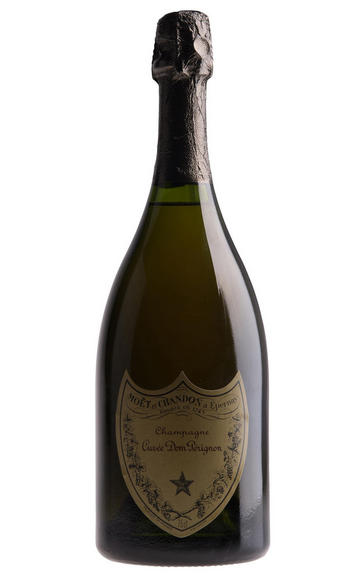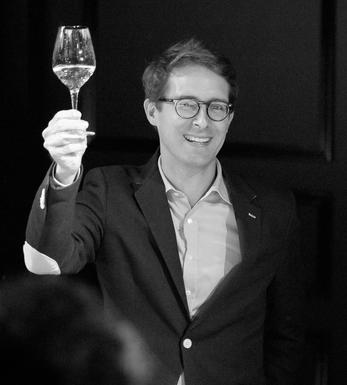
1990 Champagne Dom Pérignon, Brut

Critics reviews
This is a wine that I know extremely well from 750 ml and it's one that is beginning to tire though I hasten to point out that it's still enjoyable and just beginning to show signs of fatigue. However there are no such concerns with the same wine from magnum that remains magnificently fresh and while it's clear that the aromas are mature, that's not at all the same thing as describing the yeasty and baked apple suffused nose as tiring.
There is equally good depth and vibrancy to the beautifully delineated flavors that are supported by a fine and firm mousse that allows the texture of a well-aged Dom to be easily appreciated. For my taste this has arrived at its peak though note well that it should easily be capable of effortlessly holding for years to come.
Drink now
Allen Meadows, Burghound.com (October 2015)
Fully mature, very rich nose. It was served blind and I guessed it was even older than 1990. Toasty nose and then frisky on the palate. Notably dry finish after quite a sweet palate. Into the phase of tasting like quince. Pungent. Very interesting.
Drink now
Jancis Robinson MW, JancisRobinson.com (November 2016)
The profoundly rich 1990 Dom Perignon is a creamy-textured, full styled offering that loses none of its elegance in spite of its flavor authority. It will improve for 5-10 years, and appears capable of surpassing the fabulous 1985 and 1982. It seems obvious that the quality of the 1990 Champagne vintage is going to be remarkable, and the world-wide demand will be unprecedented. The message - buy them now!
Drink now
Robert M. Parker, Jr., Wine Advocate (Febraury 1997)
Pale color. Youthful aromas of lemon, quince, pear, toast, spice, chalk and red berries. Big, sweet and seamless, if a bit clenched in the early going. A powerful, very young wine whose fruit builds slowly in the mouth and explodes on the finish. A charry note contributes to its complexity. Possesses amazing depth of fruit, but the high quality of this wine can most easily be seen today on the extraordinary finish. May ultimately merit a 95+ rating.
Stephen Tanzer, Vinous.com (November 1998)
About this WINE

Dom Perignon
Dom Pérignon was the 17th century Benedictine monk who has gone down in history as the person who "invented" Champagne. His name was originally registered by Eugène Mercier. He sold the brand name to Moët & Chandon, which used it as the name for its prestige cuvée, which was first released in 1937.
A rigorous selection process in both the vineyard and winery ensures that only the best grapes go into Dom Pérignon champagne. Chardonnay and Pinot Noir are used in roughly equal proportions without one variety dominating the other.
In its youth, Dom Pérignon shows incredibly smooth, creamy fruit with perfect balance and weight. As it ages, it takes on wonderfully toasty aromas and a finesse equalled by very few of the other Grandes Marques.
Since 2014 Dom Pérignon has no longer been using the term oenothèque for its late-release Champagnes, but the word Plenitude. This style represents Dom Pérignon champagne that is left in contact with its lees and does not evolve in a linear fashion, but ages in a series of stages, producing “windows of opportunity, or plenitudes” when the Champagne can be disgorged and released to bring consumers a different expression of the same vintage.
There are three plenitudes in the life of a given vintage: the first plenitude spans between seven to eight years after the vintage, which is when Dom Pérignon Vintage is released, while the second one arrives between 12 and 15 years – which was previously the first oenothèque release, but from now will be branded as P2. The third window comes after around 30 years, when the Champagne has spent more than 20 years on its lees, which will now be termed as P3.

Brut Champagne
Brut denotes a dry style of Champagne (less than 15 grams per litre). Most Champagne is non-vintage, produced from a blend from different years. The non-vintage blend is always based predominately on wines made from the current harvest, enriched with aged wines (their proportion and age varies by brand) from earlier harvests, which impart an additional level of complexity to the end wine. Champagnes from a single vintage are labelled with the year reference and with the description Millésimé.
Non-vintage Champagnes can improve with short-term ageing (typically two to three years), while vintages can develop over much longer periods (five to 30 years). The most exquisite and often top-priced expression of a house’s style is referred to as Prestige Cuvée. Famous examples include Louis Roederer's Cristal, Moët & Chandon's Dom Pérignon, and Pol Roger's Cuvée Sir Winston Churchill.
Recommended Producers : Krug, Billecart Salmon, Pol Roger, Bollinger, Salon, Gosset, Pierre Péters, Ruinart

Champagne blend
Which grapes are included in the blend, and their proportion, is one of the key factors determining the style of most Champagnes. Three grapes are used - Pinot Noir, Chardonnay and Pinot Meunier.
26% of vineyards in Champagne are planted with Chardonnay and it performs best on the Côtes des Blancs and on the chalk slopes south of Epernay. It is relatively simple to grow, although it buds early and thus is susceptible to spring frosts. It produces lighter, fresher wines than those from Burgundy and gives finesse, fruit and elegance to the final blend. It is the sole grape in Blancs de Blancs, which are some of the richest long-lived Champagnes produced.
Pinot Noir accounts for nearly 40% of the plantings in Champagne and lies at the heart of most blends - it gives Champagne its body, structure, strength and grip. It is planted across Champagne and particularly so in the southern Aube district.
The final component is Pinot Meunier and this constitutes nearly 35% of the plantings. Its durability and resistance to spring frosts make the Marne Valley, a notorious frost pocket, its natural home. It ripens well in poor years and produces a soft, fruity style of wine that is ideal for blending with the more assertive flavours of Pinot Noir. Producers allege that Pinot Meunier lacks ageing potential, but this does not deter Krug from including around 15% of it in their final blends.


Buying options
Add to wishlist
Description
This is a wine that I know extremely well from 750 ml and it's one that is beginning to tire though I hasten to point out that it's still enjoyable and just beginning to show signs of fatigue. However there are no such concerns with the same wine from magnum that remains magnificently fresh and while it's clear that the aromas are mature, that's not at all the same thing as describing the yeasty and baked apple suffused nose as tiring.
There is equally good depth and vibrancy to the beautifully delineated flavors that are supported by a fine and firm mousse that allows the texture of a well-aged Dom to be easily appreciated. For my taste this has arrived at its peak though note well that it should easily be capable of effortlessly holding for years to come.
Drink now
Allen Meadows, Burghound.com (October 2015)
wine at a glance
Delivery and quality guarantee